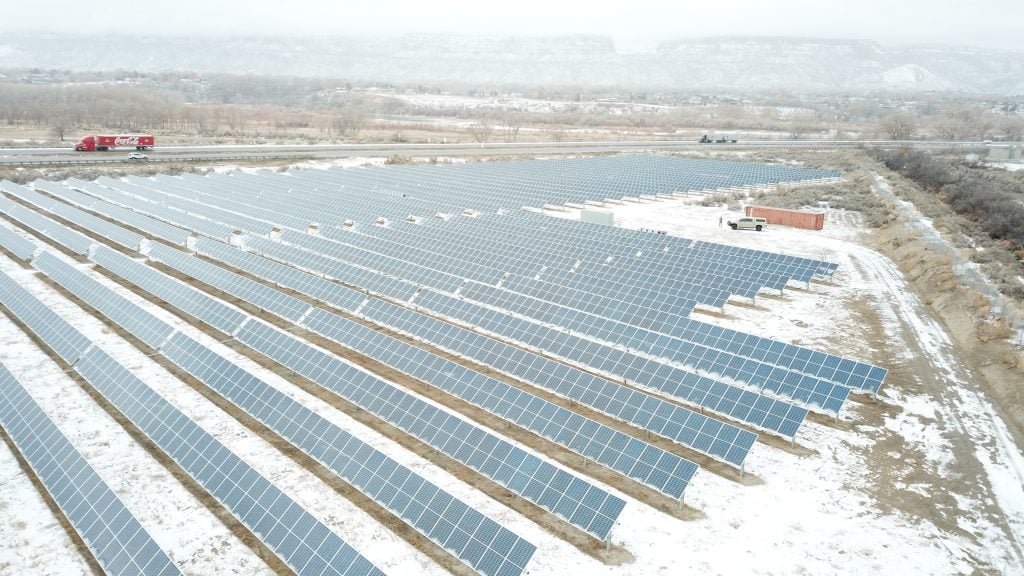How Energy Storage Can Help Utilities in Normal and Extreme Weather Events
November 10, 2021

As we’ve discussed in recent articles, battery energy storage offers a range of benefits to behind-the-meter customers (BTM), including savings, reduced operating costs, and back-up power in the event of a grid shutdown.
This article will explore how battery energy storage systems (BESS) can benefit front-of-meter (FTM) customers (such as utilities and co-ops) both during normal operation and in times of stress, such as during extreme weather events.
How BESS Support Utilities During Normal System Conditions
There are a number of ways that BESS can support utilities during normal system conditions. ‘Normal system conditions’ refers to daily planning and operation of energy production and consumption, as well as energy distribution and storage.
Optimize Arbitrage
Energy arbitrage for utilities works similar to how it works for behind-the-meter customers. As we discussed in our most recent energy storage article, businesses equipped with BESS can save money by purchasing energy from the grid when prices are low and dispatching stored energy when prices are high. Utilities, too, must procure power, and this wholesale power is also subject to price fluctuations based on supply and demand. With BESS, utilities can reduce costs by purchasing and storing energy when wholesale prices are low and dispatching stored energy when prices are high.
Increased Stability with Renewable Energy Integration
Almost all utilities across the United States are experiencing an increase in renewable energy generation on their grid. However, one of the issues renewable energy resources like solar and wind present is that they are intermittent, and their generation profile does not always match times of peak demand. These two issues can create complexities for grid operators tasked with ensuring a stable and balanced power grid.
A key feature of BESS is that it enables grid operators to shift the delivery of electricity from renewable energy assets to times when demand is high but production is low. In this way, BESS increases grid flexibility to accommodate the integration of increased renewable energy generation.
Eliminate the Need for Peaker Plants
Demand spikes are a challenge for grid operators, and they have traditionally called on natural gas “peaker” plants to reliably meet peak demand. BESS can eliminate the need for peaker plants by dispatching energy quickly and cost-effectively in order to provide capacity for peak demand.
How BESS Supports Utilities During Extreme Weather Events
Extreme weather events are on the rise. From wildfires to hurricanes, the effects of climate change are being felt across the country and the world. This climate chaos is revealing the fragility of our power grid as outages (both planned and unplanned) are becoming more common.
This is where BESS can be extremely helpful, as they can mitigate a lot of the risks faced by utilities during extreme weather events. Let’s explore how:
Virtual Power Plants
A virtual power plant (VPP) is a collection of privately-owned energy resources that can be coordinated in order to operate together. When these independently owned and operated resources are centrally controlled, they allow distributed resources to be aggregated and dispatched to provide grid services as necessary. This VPP approach can significantly increase flexibility for grid operators by taking into large amounts of customer-sited distributed energy resources.
While VPPs aren’t new – the term has been around since the 1990s – they have received increased attention in the last decade. This newfound interest is partially due to the fact that distributed energy resources have become more common and that software has improved significantly. But another driving factor is that the value of grid flexibility has become abundantly clear in the face of increasingly frequent and severe extreme weather events. As more heatwaves, winter storms, and other unprecedented weather events occur, the importance of increased grid flexibility will continue to be prioritized.
Community Microgrids
Some utilities are starting to define sections of their grid that they can “island” by employing BESS in the event of a broader outage or due to a need to de-energize the power lines in the area (see an example of such recently proposed plans by California’s SDG&E here). One distinct benefit of these FTM microgrids is that these new concepts can serve multiple utility customers rather than just one.
Eliminate Costs and Emissions Associated with Black Start Generators
When large generators are in the process of starting up, they require an external source of electricity to perform key functions before being able to generate electricity for the grid. Under normal system conditions, this external electricity can be sourced from the grid. However, in the event of a system-wide failure, the grid can no longer provide this power. The capability of restoring power to an offline power plant without the help of grid-sourced power is known as ‘black start’.
Traditionally, on-site diesel generators have been used to provide black start services, but now BES systems are being employed for the same purpose. This means that this critical function can be performed without the fuel costs and emissions associated with conventional black start generators. Furthermore, batteries installed to assist during black starts can provide other grid services during normal system conditions, such as the ones outlined above.
BESS for FTM
Battery energy storage is a wise investment for utilities – whether they are scrambling to ensure reliability during extreme weather conditions or for managing daily electricity operations. The energy experts at Pivot Energy have the know-how to help FTM customers achieve their cost-saving and resiliency goals with BES systems.
Contact us today.

.jpg?width=123&name=Angie%20Agrivoltaics%20Award%20(HQ).jpg)


.jpg?width=400&name=Angie%20Agrivoltaics%20Award%20(HQ).jpg)
